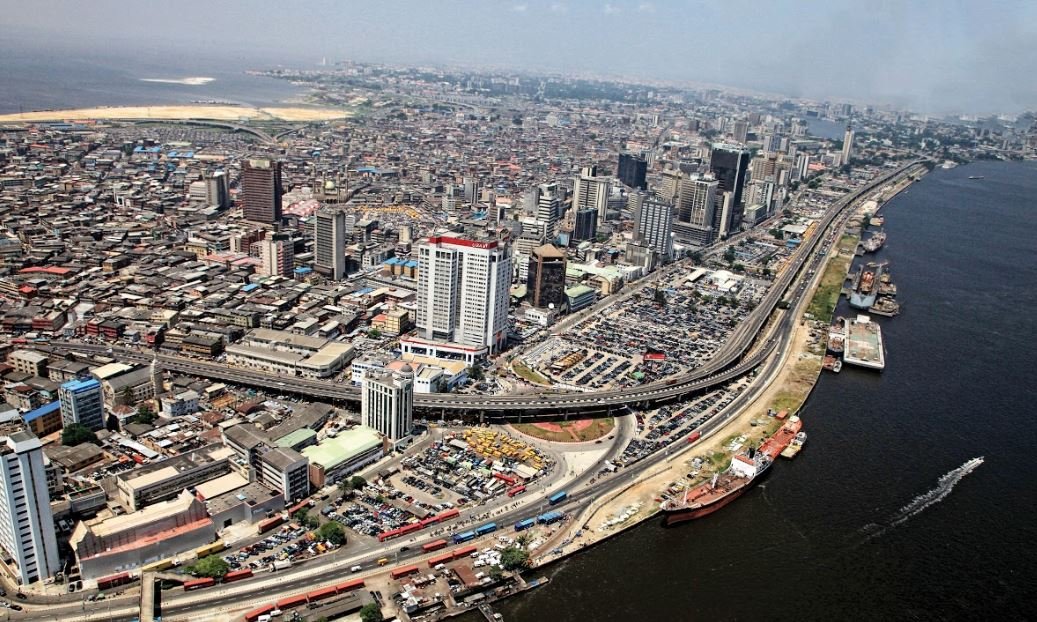This is the most comprehensive list of the top 10 smallest states In Nigeria ranked by their land area:
READ ALSO: Top 15 Biggest States In Nigeria By Land Area (2024)
Rank | State | Land Area (sq km) | Capital City |
|---|---|---|---|
1 | Lagos State | 3,345 | Ikeja |
2 | Anambra State | 4,844 | Awka |
3 | Imo State | 5,530 | Owerri |
4 | Ebonyi State | 5,670 | Abakaliki |
5 | Abia State | 6,320 | Umuahia |
6 | Ekiti State | 6,353 | Ado Ekiti |
7 | Akwa Ibom | 7,081 | Uyo |
8 | Enugu State | 7,161 | Enugu |
9 | Osun State | 9,251 | Oshogbo |
10 | Rivers State | 11,077 | Port Harcourt |
1. Lagos State
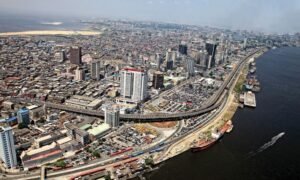
Lagos State is the smallest state in Nigeria by land area, covering about 3,345 square kilometers. It is located in the southwestern part of Nigeria.
Lagos State is bordered by Ogun State to the north and the Atlantic Ocean to the south. The capital city is Lagos, which is not only the state capital but also Nigeria’s largest city and a major commercial center in Africa.
Lagos has a huge population, estimated at over 14 million people, making it one of the most populous urban areas in the world.
The state is known for its bustling economy, which includes trade, finance, and entertainment. Major markets like Balogun Market and Lekki Market are busy spots where people from all over Nigeria and beyond come to trade.
The cultural life in Lagos is vibrant, with festivals, different cuisines, and an active arts scene. Events such as the Lagos Carnival highlight the rich cultural heritage of its people.
Lagos also has beautiful beaches like Tarkwa Bay and Elegushi Beach, which are popular with both locals and tourists.
2. Anambra State
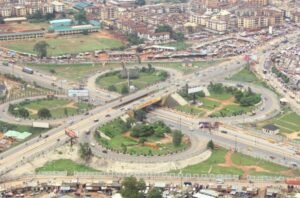
Anambra State, located in southeastern Nigeria, covers an area of 4,844 square kilometers. It is bordered by Delta State to the west, Imo State and Rivers State to the south, Enugu State to the east, and Kogi State to the north.
The capital city of Anambra is Awka, and Onitsha is its largest commercial center, famous for its lively markets. Anambra’s history dates back to the 9th century AD.
The people of Anambra are mainly from the Igbo ethnic group, known for their entrepreneurial spirit. And, the state has a high literacy rate and is home to important educational institutions like Nnamdi Azikiwe University.
Economically, Anambra benefits from natural resources such as crude oil, natural gas, and bauxite, along with fertile land ideal for farming crops like yams and cassava.
The state has a lower poverty rate compared to many other parts of Nigeria. Anambra is often called “The Light of the Nation” because of its significant contributions to politics, education, and business.
READ ALSO: List Of All Departments In EFCC In Nigeria
3. Imo State
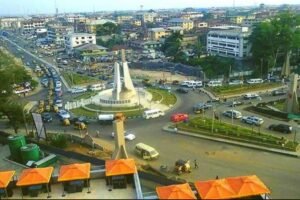
Imo State is the third smallest state In Nigeria. It is located in southeastern Nigeria and is bordered by Anambra State to the north, Abia State to the east, and Rivers State to the south and west.
Imo state was created in 1976 from the former East-Central State and named after the Imo River. The state’s capital is Owerri, which is the largest city and a major industrial and educational hub.
Imo State is primarily inhabited by the Igbo people, who speak Igbo and English. Geographically, Imo covers about 5,530 square kilometers.
The state is rich in natural resources like crude oil, natural gas, lead, and zinc. It has a population of over 5.4 million people, making it one of the most densely populated states in Nigeria.
However, the state economy relies heavily on agriculture, with major crops including yams, cassava, and oil palm. Imo also has several rivers and lakes, such as Oguta Lake and the Imo River.
Despite its potential, Imo faces issues like environmental degradation and security problems related to local militias and land conflicts. The government is working on improving infrastructure and attracting investments to develop the state further.
4. Ebonyi State
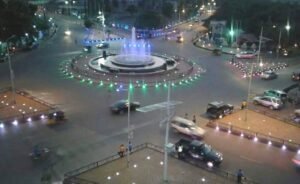
Located in southeastern Nigeria, Ebonyi State was established in 1996 from parts of Enugu and Abia States. Its capital is Abakaliki. Ebonyi is bordered by Benue State to the north, Cross River State to the east, Abia State to the south, and Enugu State to the west.
The state is one of the smallest states In Nigeria, and it’s inhabited by the Igbo ethnic group, with notable clans such as Ezza, Izzi, and Edda.
Ebonyi covers about 5,670 square kilometers and is known for its rich natural resources, including limestone, coal, salt, and granite.
Agriculture is essential to its economy, with key crops like rice, yams, cassava, and maize. Also, Ebonyi is recognized for its rice production.
The state’s population is estimated to be over 2 million people, with varying densities across its 13 local government areas.
While Ebonyi has made progress in infrastructure, it still faces challenges such as poverty and limited healthcare services.
READ ALSO: List Of All Departments In EFCC In Nigeria
5. Ekiti State
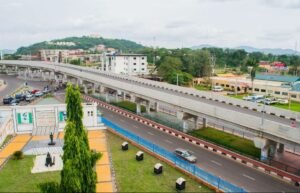
Ekiti State is the fifth smallest state In Nigeria, covering an area of 6,353 square kilometers. It is surrounded by Kwara State to the north, Kogi State to the east, Ondo State to the south, and Osun State to the west.
The capital of Ekiti State is Ado-Ekiti. However, the population of Ekiti State is about 3.35 million people, mainly from the Yoruba ethnic group, specifically the Ekiti subgroup.
The state is famous for its highest number of professors per capita in Nigeria. This focus on education is supported by several higher institutions, including Ekiti State University and Afe Babalola University.
The state’s landscape is characterized by hills and valleys. In fact, the name “Ekiti” itself comes from the Yoruba word for hills.
Also, the economy of Ekiti State is largely based on agriculture, with about 75% of the population engaged in farming. Key products include cocoa, rice, oil palm, and kola nuts. The state also has mineral resources like clay and kaolin.
Culturally, Ekiti State is vibrant with festivals that highlight its rich heritage. Tourist attractions such as the Ikogosi Warm Springs and Arinta Waterfalls draw visitors.
6. Abia State
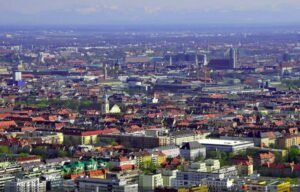
Abia State is in southeastern Nigeria and covers an area of 6,320 square kilometers. It is bordered by Ebonyi and Enugu States to the north, Cross River and Akwa Ibom States to the east, Rivers State to the south, and Imo State to the west.
The capital city of Abia State is Umuahia. Abia State has a population of about 3.84 million people, predominantly from the Igbo ethnic group.
The economy in the state is driven by agriculture and commerce. Major crops grown in Abia include yams, cassava, palm oil, and rice.
The state is part of Nigeria’s oil-rich Niger Delta region, which adds to its economic importance. Abia also has a strong manufacturing sector, especially in textiles and food processing.
The state culture is rich and diverse, featuring traditional festivals that celebrate its heritage. Notable cultural sites include the National War Museum in Umuahia.
However, the state is divided into 17 local government areas and is continuously improving its infrastructure and educational institutions to support its growing population.
7. Akwa Ibom State
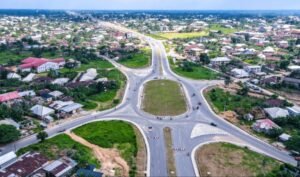
Akwa Ibom State, located in southeastern Nigeria is one of the smaller states in Nigeria, covering about 7,081 square kilometers. The state was formed on September 23, 1987, when it was carved out from the former Cross River State.
The capital of Akwa Ibom is Uyo, a lively city known for its culture and economic activities, and it is bordered by Cross River State to the east, Abia State to the north, and the Atlantic Ocean to the south.
With a population of around 5 million people, Akwa Ibom is inhabited by the Ibibio and Annang ethnic groups. The state’s economy is heavily influenced by oil and gas production, making it one of Nigeria’s richest oil-producing states.
Agriculture is also important, with crops like cassava, yam, and palm oil being grown. Akwa Ibom is famous for its cultural festivals, such as the Akwacross Festival and the Ekpo Festival.
Tourism is growing in Akwa Ibom, with attractions like the Ibom Tropicana Entertainment Centre and beautiful beaches along the Atlantic coast drawing visitors.
READ ALSO: List Of CBN Governors Of Nigeria (1958-Present)
8. Enugu State
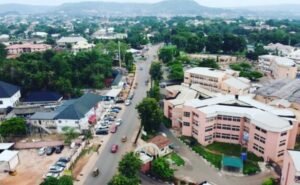
Enugu State is another small state, located in southeastern Nigeria. It covers an area of 7,161 square kilometers and was established in 1991 from parts of Anambra State.
The capital city is Enugu, which has historical significance as a coal mining center from colonial times. Enugu is bordered by Kogi State to the north, Benue State to the northeast, Ebonyi State to the southeast, Abia State to the south, and Anambra State to the west.
It has a population of about 3 million people, mostly from the Igbo ethnic group. Agriculture plays an important part in Enugu’s economy, with the state producing crops such as yam, cassava, maize, and vegetables.
It also has mineral resources like coal and limestone Tourism in Enugu is supported by attractions like the Awhum Waterfall, Ngwo Pine Forest, and the bustling Ogbete Market.
9. Osun State
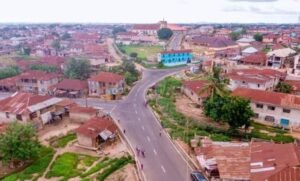
Osun State is the ninth smallest state in Nigeria, covering an area of 9,251 square kilometers. It was created on August 27, 1991, from the eastern part of Oyo State.
The capital city of Osun is Osogbo. The state is surrounded by Kwara State to the north, Ekiti and Ondo States to the east, Ogun State to the south, and Oyo State to the west.
The people of Osun State are mainly from the Yoruba ethnic group. There are also several notable subgroups within the Yoruba community, including Ife, Ijesha, Igbomina, and Oyo.
The state’s economy is based on agriculture, and some essential crops grown In the state include yams, cassava, maize, and cocoa.
Osun State is also known for its rich cultural heritage. It is home to Ile-Ife, a historic city considered the birthplace of Yoruba civilization.
Every year, the Osun-Osogbo festival takes place, attracting many visitors from around the world. This festival honors the goddess Osun at the sacred Osun-Osogbo Grove, which is a UNESCO World Heritage Site.
In addition to its cultural festivals, Osun State has several attractions like the Nelson Mandela Freedom Park in Osogbo.
Traditional crafts such as cloth weaving and tie-and-dye fabric making are important to the local economy and culture.
10. Rivers State
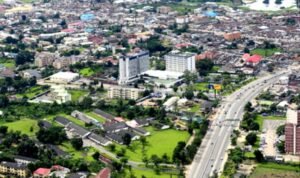
Rivers State is located in the South-South region of Nigeria and is slightly bigger than Osun State, covering 11,077 square kilometers. Its capital city is Port Harcourt, a major urban center known for its strong economy driven by oil and gas production.
Rivers State was created in 1967 from parts of Eastern Nigeria and is bordered by Imo State to the northwest, Abia State to the northeast, Akwa Ibom State to the east, and Bayelsa State to the south.
The economy of Rivers State relies on petroleum resources, and It is one of Nigeria’s top oil-producing states and plays an important part in the country’s energy sector.
Besides oil, the state has industries like shipbuilding and food processing. Rivers State is diverse, with different ethnic groups such as the Ijaw, Ikwerre, Ogoni, and Efik.
The Port Harcourt Carnival is a major cultural event that showcases the state’s rich heritage. The state also has major ecological areas, including mangrove forests along the coastline.

